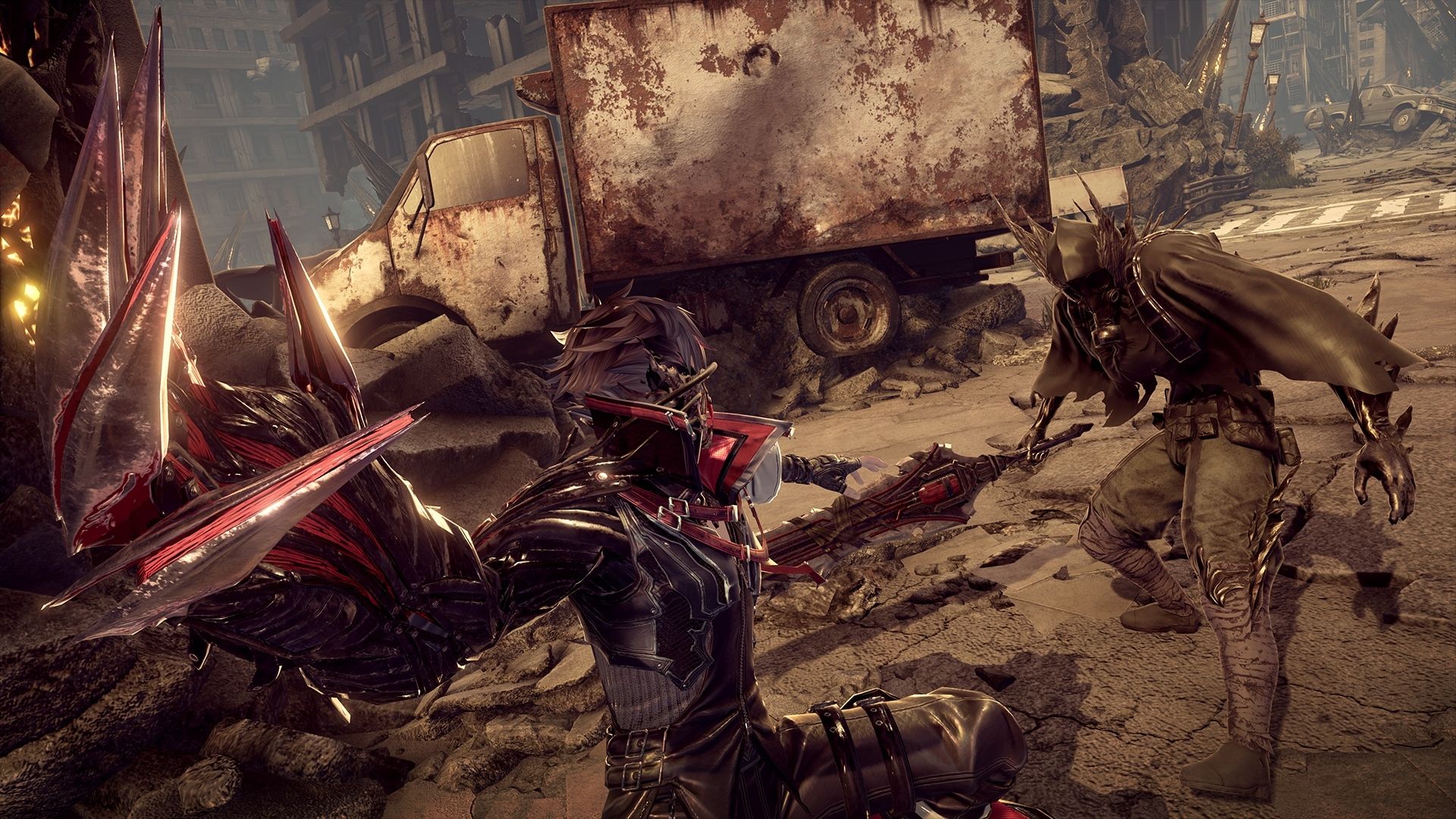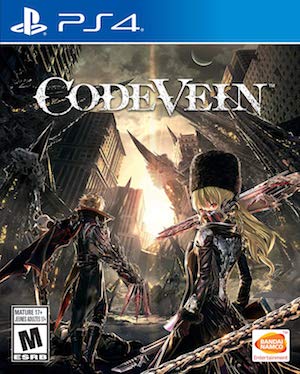
Code Vein has been in the mouths of gamers lately. Not only for its beautiful graphics, art direction and style, but for its difficulty and JRPG elements. Set in a gothic world that’s both entrancing and eerily stimulating, you set out on an adventure that suits your own playstyle. We had a chance to sit down with Senior Global Brand Manager Stephen Akana at Bandai Namco and ask him the blood sucking questions that we’re dying to learn from this thrilling vampire RPG.
"All the characters have their own story that you’ll be able to discover. So that’s a major part of that connection that the developers feel that the players are going to make, as you make your own characters in the world."
How much of an emphasis does Code Vein put on story and storytelling?
There’s a huge emphasis for this game. The development team have worked on a lot of titles which has a story-driven narrative. All the characters have their own story that you’ll be able to discover. So that’s a major part of that connection that the developers feel that the players are going to make, as you make your own characters in the world. And all these other characters you’ll be able to find out more of and fall in love with.
Can you talk about the nature of Code Vein’s world? Is it more of a large, traditional open world, or can we expect it to feature layered and interconnected level design similar to Metroidvania titles?
It’s interconnected dungeons.
Can you speak about the Gifts system, and how it works with the game’s combat?
The Gifts are all tied to Blood Codes. So you can think of Blood Codes like your character class. With each of those Blood Codes there are certain Gifts that you’ll be able to unlock. Once you’ve fully mastered those gifts you can max out your proficiency, then it becomes where you could actually move Blood Codes. Unlike a lot of other games where you pick your class and you need to stick with it throughout the entire game, [in Code Vein] you can change on the fly. As you unlock Blood Codes you can switch to it immediately.
The conversation of difficulty and accessibility in video games has become very pertinent of late- how does Code Vein tackle these issues? Does the game offer difficulty options?
So that’s a big part of Code Vein. It’s a solitary experience. You don’t have a story that drives a narrative, it’s more like lore discovery. So they thought of the things that were like blockers or walls, for players who look from a far and see the design and maybe the difficulty’s too hard for them. You have a partner character with you at all times. That NPC partner character— they control agro, they can add in damage, they can give you buffs. So if you end up dying you have this extra life so-to-speak with this extra character. You can have a third player join online for co-op. That gives you extra opportunities to, “I’ve hit this wall—“ Rather than just having to continue to bang against it, you’re like, “Change out my Blood Code, change out my partner.” There are a lot of different ways for people to be able to tackle these challenges.
"The team is full of a lot of hard-core gamers. You really see the action-RPG. The more people jump into this game, the more innovation that we’re going to see. It’s really elevating into being it’s own full-fledged genre."
How heavily does the theme of vampires play into gameplay mechanics?
Your armor in the game is called a Blood Veil that doubles as a blood draining tool. There’s four different types. And each have their attributes in terms of how they’re tied to your parries, and it’s also tied to how are you’re able to drain and collect blood. When you drain enemies you’re able to build up points that are like mana. It’s very interconnected.
The art style of Code Vein is a very interesting aesthetic choice- what was the process behind settling with that as the game’s look?
It’s funny. When I was originally working on this title about three years ago, there was a strong focus on the design of the characters. There were all these different fashion type of elements that they wanted to bring together. Kind of mature, gothic-industrial feel. There are a lot of different inspirations in terms of video games, pop culture, anime. The team is full of a lot of hard-core gamers. You really see the action-RPG. The more people jump into this game, the more innovation that we’re going to see. It’s really elevating into being it’s own full-fledged genre.
Do you have any plans to launch on Switch?
We don’t have any news about the Switch at this time.
Can you tell us about the various RPG mechanics and in-game progression system?
As you defeat enemies, you’re able to collect Hazes from them. And Hazes is able to be utilized as Max out your proficiency and gifts. There’s item discoveries, whether it’s weapons or special items that you’re able to find throughout the world. There’s a lot of different RPG elements, different customizations that you can do. You decide where you want to put those points.
Will the final game have any sort of difficulty options?
It has a singular difficulty.
"A lot of work has gone into the design of each of the bosses. What have you been able to unlock in terms of Blood Codes, what have you been able to unlock based on weapons, and the progression of the different bosses that you have?"
What can you tell us about the combat system in terms of weapons and various items?
So there is five different weapon types. A regular, like a short sword. A Hellbird, which is like a spear. A hammer and bayonet. Each one has different Gifts that you can use with them. Some Gifts are kind of magical and tactile. And some things are more tactile and physical attacks. Certain Gifts might only work for a blunt weapon, or maybe it’s an acrobatic type move that may only work if you have a short sword. The way you build out your character— your character speed may be a little different. So let’s say you have a heavy hammer and you want to use a dodge, you’re going to roll out of the way. If you have a short sword and you have a Blood Code that focuses on agility, your character will actually do this kind of dash. There’s different ways of being able to customize. Everyone plays games differently. There’s lots of different ways these can adapt to your play style as a gamer.
How are your ensuring that Code Vein features unique boss fights?
A lot of work has gone into the design of each of the bosses. What have you been able to unlock in terms of Blood Codes, what have you been able to unlock based on weapons, and the progression of the different bosses that you have? The first couple bosses that you see, there’s a couple extra layers of different things you need to take notice of. Down the road you’ll find a boss that ends up adding a poison element. There’s certain ways where you had that certain tactic for that last boss, you’re not going to necessarily be able to marry it to the next one. So there’s a lot of variation in terms of size, in terms of their mobility, in terms of how many people you’re facing.
Is there anything else you’d like to add about Code Vein?
The development team has been working on it for a very long time. We’re really excited about the reception that we’ve had with the network test. It was something everyone was unanimously really, really excited about. We’re really excited that we’re announcing but the title is coming out on September 27. It’s just a couple months away, so there’s a lot of news we have to share with everyone.


















